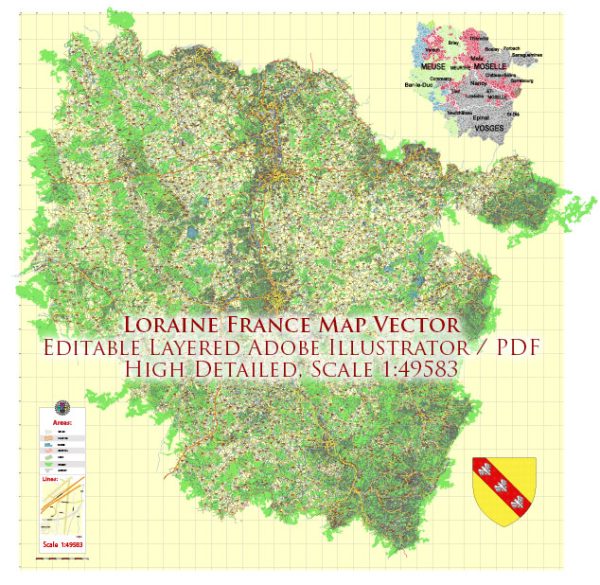Lorraine is a region in northeastern France known for its diverse and interesting geology. The region’s geology has been shaped by millions of years of geological processes, and it contains a variety of rock formations, landscapes, and mineral resources. Here’s a brief description of the geology of Lorraine:
- Sedimentary Rocks: Lorraine is predominantly composed of sedimentary rocks, which were formed over millions of years by the accumulation of sediments in ancient seas and lakes. These sedimentary rocks include limestone, sandstone, marl, and shale.
- Vosges Mountains: The western part of Lorraine is dominated by the Vosges Mountains, which are relatively low, ancient mountains composed mainly of sandstone and shale. These mountains offer scenic landscapes, including rolling hills, dense forests, and numerous lakes.
- Lorraine Plateau: The central part of Lorraine consists of a plateau characterized by fertile soil, making it suitable for agriculture. This plateau is primarily composed of limestone, which has been an important factor in the region’s agricultural productivity.
- Metz Basin: The Metz Basin, in the northern part of Lorraine, is an area with a complex geological history. It contains layers of sedimentary rocks and has been influenced by tectonic movements and glacial activity in the past.
- Mineral Resources: Lorraine has been historically known for its mineral resources. The region has significant iron ore deposits, which played a crucial role in the development of the iron and steel industry during the industrial revolution. The mining of iron ore has had a significant impact on the landscape and economy of the region.
- Volcanic Activity: Lorraine has also experienced volcanic activity in its geological history. The result is the presence of volcanic rocks and geological formations, such as basalt columns, in certain areas.
- Geological Diversity: Lorraine’s diverse geology has given rise to a range of landscapes, including forests, wetlands, and river valleys. It is also home to several rivers, such as the Moselle and Meurthe, which have played important roles in the region’s history and continue to be vital for transportation and agriculture.
- Geological Heritage: Lorraine’s geological heritage is of interest to geologists and paleontologists. Fossils and geological formations can be found in various parts of the region, providing insights into the Earth’s ancient history.
Overall, Lorraine’s geology is a testament to the dynamic processes that have shaped the Earth over millions of years, and it contributes to the region’s natural beauty and economic significance. The combination of sedimentary rocks, mountains, and mineral resources has influenced the culture, economy, and environment of this part of France.


 Author: Kirill Shrayber, Ph.D.
Author: Kirill Shrayber, Ph.D.